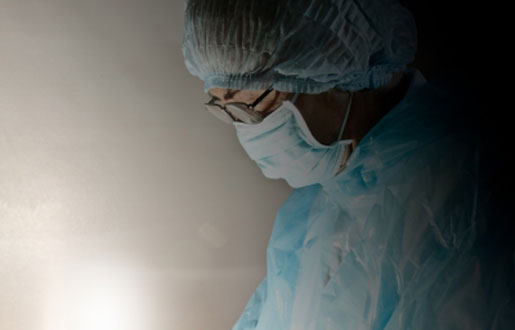Bringing surgeons into the product development process can save time and money for device makers. How big a role are clinicians playing in R&D?
September 9, 2016

Bringing surgeons into the product development process can save time and money for device makers. How big a role are clinicians playing in R&D?
Jeff Schell
The role of physicians in business is evolving. Many are exploring entrepreneurism and developing ideas, procedures, and products that directly serve the needs of their patients. But for many physicians, the time it takes to develop and produce new products creates barriers to bringing new concepts to market.
On a similar note, medical device companies are increasingly seeking physician input to drive innovation. Early stage collaboration with physicians can reduce the need for redevelopment, along with the time and money that comes with it. The rise of physician entrepreneurship along with device companies seeking surgeon input has driven a new paradigm in research and development--one that is led by physicians, enhanced by inventors, created by designers, and then marketed by businesses to create the best products in the medical field to date.
The overarching objective for both surgeons and device companies is to improve patient outcomes, so the collaboration between the two groups is a natural fit. Savvy health technology companies have developed innovative design processes that incorporate surgeon input. What does this development cycle look like, and where are surgeons contributing the most, thus far?
Innovation Assessment
R&D is time and resource-intensive. Concept analysis is a crucial step in early-stage R&D contribution from surgeons that can preserve time and money. Surgeons can draw on their hands-on experience to provide an assessment of whether a concept is viable from the onset of the development process. In a world of limited resources, this reduces wasteful spending on R&D for a concept that will not be viable in the operating room. For instance, physicians have expertise on whether a certain product is unique or if it fills a specific need in the marketplace. With the ever-growing number of medical devices available, surgeons are in the best position to assess whether a product would work and would fill a need.
Ideation and Concept Development
Surgeons also play a vital role in taking a concept and refining it into a real-world device. Physicians are now joining inventors and designers to begin an iterative, creative process to identify different potential solutions to current holes in the marketplace. Engineering and product team incorporate physician input to improve on a concept and to create new iterations of the idea. Incorporating surgeon input in this creative process is not only engaging for the physician, but it saves time and money on the back-end of the development process.
Financial and Regulatory
Further in the R&D process, the need for regulatory approval arises. This process is tedious, but also critical to getting products and procedures in front of patients. Physicians' involvement in the financial and regulatory phase helps by lending a critical third-party credibility to new products seeking FDA approval.
Though the trend of surgeon-led innovation is just beginning to blossom, it's fair to say this collaboration benefits surgeons, device companies, and patients alike. At the end of the day, positive patient outcomes are what drives physicians and medical device companies to create and improve healthcare options for patients.
We may begin to see this trend rise and evolve into an even more collaborative process. Thus far, we have seen breakthrough innovations evolve from this development strategy, driving positive results in the operating room.
Jeff Schell is CEO of TranS1®. Reach him at [email protected].
[Image courtesy of TAOTY/FREEDIGITALPHOTOS.NET]
You May Also Like


